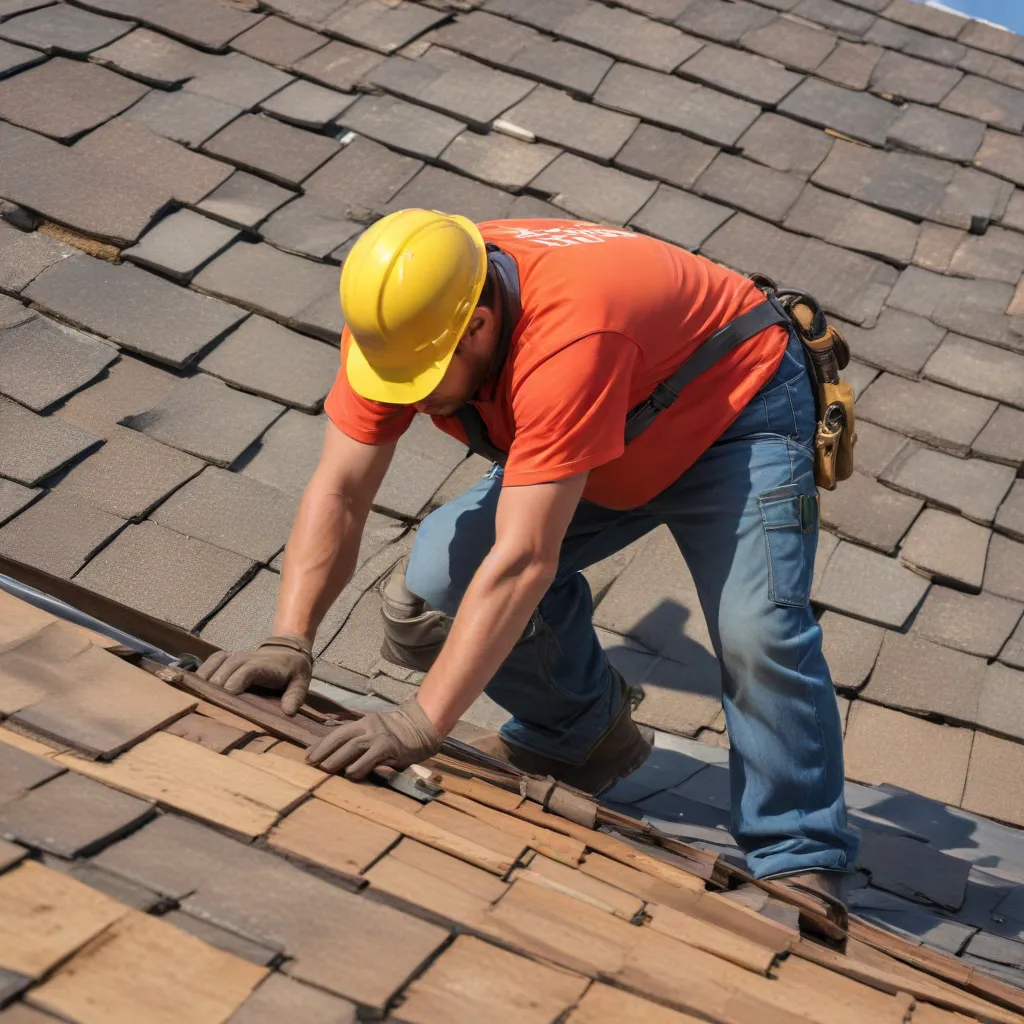
As an experienced roofing specialist for Genuine Roof Systems, I’ve seen firsthand the critical role that roofer helpers play in the construction and maintenance of resilient, energy-efficient, and aesthetically pleasing roofing systems. In this article, we’ll explore how to optimize workforce training and safety protocols to empower this essential segment of the roofing industry.
Roofers Occupation
Roofer Job Description
Roofers are responsible for the installation, repair, and maintenance of various roofing materials, including shingles, tiles, metal, asphalt, and slate. Their duties encompass measuring and cutting roofing materials, installing underlayment and flashings, and ensuring proper ventilation and water drainage. Roofer helpers, on the other hand, assist roofers by performing less skilled tasks, such as handling materials, tools, and equipment, as well as cleaning the work area.
Roofer Training and Education
Becoming a roofer typically involves completing an apprenticeship program, which combines on-the-job training with classroom instruction. These programs, often sponsored by industry associations or union organizations, provide comprehensive education in roof construction techniques, building code compliance, and safety practices. Upon completing the apprenticeship, roofers may obtain various certifications, such as the Certified Roofing Specialist (CRS) or the Certified Roofing Contractor (CRC), demonstrating their expertise and professionalism.
Workforce Training for Roofers
Training Curriculum
Effective workforce training for roofer helpers should focus on developing a comprehensive understanding of roofing systems, installation methods, and safety protocols. The curriculum should cover topics such as:
- Safety Protocols: Familiarizing trainees with the proper use of personal protective equipment (PPE), fall protection systems, and workplace safety procedures.
- Installation Techniques: Hands-on training in measuring, cutting, and properly installing various roofing materials, including underlayment, shingles, tiles, and metal panels.
- Building Code Compliance: Educating trainees on local and national building codes, ensuring that roof systems are installed according to industry standards.
- Material Handling: Instruction on the safe transportation, storage, and handling of roofing materials, such as asphalt, slate, and Galvalume metal sheets.
- Repair and Maintenance: Training in the identification and repair of common roofing issues, such as leaks, damaged shingles, and deteriorating sealants.
Training Delivery Methods
Roofer helper training can be delivered through a combination of classroom instruction and hands-on workshops. Classroom sessions should cover the theoretical aspects of roofing, including materials, installation methods, and safety protocols. Hands-on workshops, on the other hand, provide trainees with opportunities to practice their skills in a controlled environment, under the guidance of experienced instructors.
Safety in Roof Construction
Common Roofing Hazards
Roofing work inherently poses several safety risks, including working at heights, material handling, and exposure to hazardous substances. Roofer helpers, in particular, must be aware of these dangers and be trained to mitigate them effectively.
- Working at Heights: Roofer helpers may be required to work on steep-pitched roofs, scaffolding, or ladders, increasing the risk of falls and other height-related incidents.
- Material Handling: Transporting and maneuvering heavy roofing materials, such as asphalt shingles, concrete tiles, or metal panels, can lead to musculoskeletal injuries if proper lifting techniques are not followed.
- Exposure to Hazardous Substances: Roofers and their helpers may encounter hazardous materials, such as asbestos, silica dust, or volatile organic compounds (VOCs), which can pose serious health risks if not properly managed.
Safety Equipment and Protocols
To address these safety concerns, roofer helper training should emphasize the importance of using appropriate personal protective equipment (PPE) and adhering to established safety protocols. This includes:
- Personal Protective Equipment (PPE): Providing and training on the proper use of hard hats, safety harnesses, gloves, and eye protection.
- Fall Protection Systems: Ensuring the availability and proper use of anchor points, guardrails, and personal fall arrest systems on elevated work surfaces.
- Site Safety Procedures: Developing and implementing comprehensive safety plans, including emergency response protocols, hazard communication, and accident reporting.
- Hazardous Material Handling: Educating trainees on the identification, containment, and disposal of hazardous roofing materials, in compliance with environmental regulations.
Impact of Workforce Training
Improved Productivity
Comprehensive workforce training for roofer helpers can have a significant impact on the overall productivity and efficiency of roofing projects. By providing trainees with a thorough understanding of roofing systems and installation techniques, they can perform their duties more effectively, contributing to:
- Efficient Work Processes: Trained roofer helpers can work more collaboratively with their roofing crews, streamlining material handling, tool usage, and task coordination.
- Quality Workmanship: Improved training leads to better attention to detail, resulting in higher-quality roof installations that meet or exceed industry standards.
- Reduced Waste: Knowledgeable roofer helpers can minimize material waste and optimize resource utilization, leading to cost savings for the project.
Reduced Workplace Injuries
Effective safety training is crucial in the roofing industry, where the risk of serious accidents is inherently high. By equipping roofer helpers with the necessary knowledge and skills to recognize and mitigate safety hazards, workforce training can contribute to a significant reduction in workplace injuries, such as:
- Accident Prevention: Trained roofer helpers are better equipped to identify and address potential safety risks, reducing the likelihood of falls, struck-by incidents, and other roofing-related accidents.
- Cost Savings: Fewer workplace injuries translate to lower medical expenses, reduced worker’s compensation claims, and improved overall project profitability.
- Employee Morale: A strong safety culture, fostered through comprehensive training, can boost employee morale and job satisfaction, leading to higher retention rates and a more dedicated workforce.
In conclusion, investing in robust workforce training and safety protocols for roofer helpers is a critical step in enhancing the overall quality, efficiency, and safety of roof construction projects. By equipping this essential segment of the roofing industry with the necessary skills and knowledge, roofing contractors can not only improve productivity and reduce workplace injuries but also elevate the reputation and professionalism of the industry as a whole. At Genuine Roof Systems, we are committed to supporting this endeavor and providing our customers with the highest-quality roofing solutions, backed by a skilled and safety-conscious workforce.

























